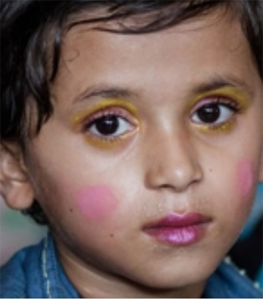Numbers of child migrants, refugees rising – UN
More children than ever are becoming migrants or displaced people, according to a new report by the UN children’s agency UNICEF.
Around 35.5 million boys and girls were living outside their country of birth in 2020 and another 23.3 million were displaced internally, the report says.
 The report, titled ‘Uncertain Pathways’, found that over 2020, there were almost 15 million more children displaced, or around 41,000 each day – the majority of them boys.
The report, titled ‘Uncertain Pathways’, found that over 2020, there were almost 15 million more children displaced, or around 41,000 each day – the majority of them boys.
It said that gender played a pivotal role in a child’s decision to leave home and continues to shape their experiences and vulnerabilities throughout their journey.
Four in ten international child migrants live in just ten countries and comprise a third of all child migrants – many of them refugees, the report said.
Around two thirds of all international migrants live in high-income countries (65 per cent) and most of the remaining in middle income countries (31 per cent).
Collectively, the ten countries with the largest numbers host 14.7 million international child migrants – 41 per cent of the global total. In countries like Jordan, Turkey and Uganda, the majority are refugees, the report says.
It says the Middle East and North Africa regions are home to the largest number of international child migrants and shows the greatest gender imbalance
“Around nine million child migrants lived in the Middle East and North Africa in 2020 – 54.3 per cent were boys,” the report said.
“Western Europe also showed a more pronounced gender imbalance, with boys comprising 52 per cent of the 5.6 million child migrants. In most other regions, the numbers of boys and girls were more evenly distributed. Girls outnumbered boys in Eastern and Southern Africa (50.4 per cent) and in West and Central Africa (52.7 per cent).”
UNICEF spokesperson Verena Knaus said that close to 60 million girls and boys have migrated across borders or been forcibly displaced within their own countries.
She said that the number had risen by almost ten million since 2015.
“We know surprisingly little about how migration and flight is experienced differently by gender,” Ms Knaus said.
“Gender skews certain migration routes and experiences. Nine in ten unaccompanied children seeking asylum in Europe were boys, more than half of whom came from Afghanistan, Morocco and Syria,” she said.
Ms Knaus said Afghanistan was number one on the list of the top ten countries of origin – with the largest number of unaccompanied children seeking asylum in Europe.
“While we know that many more Afghan boys have migrated across borders than girls, the UNICEF official highlighted the gender imbalance,” she said.
“Where are the Afghan girls? Where and how can Afghan girls seek international protection, today and in the future?”
The report also says that migration decision making is gendered with girls and boys motivated to move for different reasons.
“Boys are often expected to assume the role of bread winner, while girls may migrate as a strategy to delay early marriage or conflict-related sexual violence,” Ms Knaus said.
Migration-specific risks are also gendered with girls outnumbering boys by four to three as victims of trafficking for sexual exploitation, while boys are often trafficked for forced labour, the report said.
It highlighted how existing gender gaps in education are further exacerbated in humanitarian settings, with displaced girls more likely to be out of school than boys.
“In camp settings, girls are 2.5 times more likely to be out of school than boys”, Ms Knaus said.
The report calls for Governments to address “blind spots” through greater coordination and investment in gender-specific data, disaggregation and standardisation.
It also urges a move away from one-size-fits-all approaches and to prioritize interventions that are tailored to gender-specific risks, needs and drivers of children on the move.
The response must not just be “gender-responsive but “gender transformative” to address the deeply ingrained inequalities between girls and boys when it comes to access to international protection and the opportunities that migration offers, Ms Knaus said.
Read the full report here: https://data.unicef.org/resources/uncertain-pathways-how-gender-shapes-the-experiences-of-children-on-the-move/












